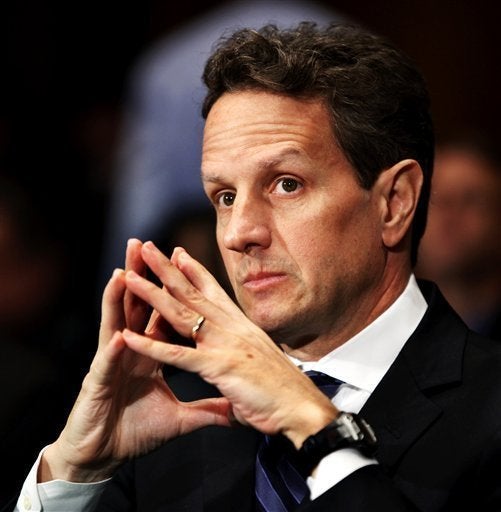
The global financial and economic crisis arose out of radical deflation in the U.S. housing market, as the real estate asset bubble split asunder. With the collapse in housing prices came the contraction of another asset bubble: equities. The ongoing demand destruction has also deflated commodity prices from their recent peaks, giving rise to a collective view among economic policymakers that deflation represents the single greatest risk to the global economy.
In itself, deflation is a dangerous economic phenomenon. Historians of the Great Depression often refer to deflation in the 1930s as a contributing factor to the prolongation of that epochal downturn in the world's economy. Looking closely at the dynamics of deflation, it is not difficult to see why this is a dangerous economic state to be in. When prices of major durable goods, especially homes, continue to decline, this inserts a strong dose of uncertainty into the human decision-making process. Not many consumers are likely to take out a mortgage on a home that they believe will actually decline in value right after the legal papers are signed. Or so the classical economic theory goes.
However, though not downgrading the danger of deflation, I believe policymakers are ignoring other factors regarding this economic and financial condition. Furthermore, the U.S. government and Federal Reserve in particular, are taking steps to "cure" deflation that will inevitably lead to hyperinflation, which in the long-term may prove far more destructive to the long-term health of the U.S. economy.
History demonstrates that deflation is not a permanent condition. Market forces, unencumbered by fiscal and monetary intervention, eventually restore pricing equilibrium. At a certain point prices of major durables such as homes are low enough to encourage new categories of consumers to enter the marketplace. As demand is restored, prices stabilize and then resume their upward ascent. It is all a question of time. However, key decision-makers in the United States are not paragons of patience. They want deflation cured immediately, which explains why the U.S. Treasury and Federal Reserve are hell-bent on policies that are guaranteed to be inflationary. The question is how bad will inflation ultimately be.
Massive quantitative easing by the Fed is pouring trillions of U.S. dollars into the money supply, essentially conjured out of thin air. This is being done without transparency, the rationale being that frozen credit markets require a vast expansion of the money supply in an attempt to get the arteries of commerce flowing again. Similarly, the U.S. government is spending vast amounts of money it does not have, with the Treasury Department selling unprecedented levels of government debt in a frantic effort to fund the wildly expanding U.S. deficit. These two forces, quantitative easing and multi-trillion dollar deficits, are the core ingredients of an explosive fiscal cocktail that I believe will ultimately lead to hyperinflation.
What exactly is hyperinflation? Economists disagree on a common definition, so I will offer one myself. Double-digit inflation extending over a period of at least two years would arguably be a hyperinflationary period. It can get much worse, witness Weimar Germany in the early 1920's and Zimbabwe at present. The most recent experience the United States had with this unstable economic condition was in 1981, when the annual CPI rate exceeded 13%. The cure was draconian; Federal Reserve Chairman Paul Volcker engineered a severe economic recession that created the highest level of U.S. unemployment since the Great Depression -- until now. The federal funds rate, currently near zero, rose to above 20% under Volcker's harsh discipline. Eventually high inflation was purged out of the system and economic growth was restored, however the monetary regimen was punitive for several years.
The current monetary and fiscal policies being enacted by the key economic decision-makers in the United States are laying the groundwork for a far more dangerous inflationary environment than anything encountered by Paul Volcker. The explosive growth in the money supply and government debt is simply unsustainable without severe inflation. It must be kept in mind that the Federal government is not the only public authority engaged in massive deficit spending. Throughout America, state, county and municipal governments are faced with imploding tax revenues and lack the ability or political flexibility to cut services to a level commensurate with revenue flows. Both the Fed and the public sector are engaging in a reckless gamble; borrow like crazy in the hope that this overdose of economic stimulation will restore growth to the economy and normal tax revenues, leading to a decreased and sustainable level of public sector indebtedness.
If one believes that the policymakers running the Federal Reserve, Treasury and Federal government, the same architects of the Global Economic Crisis, are smart enough to now get everything right, perhaps we may escape the worst consequences of their turbo-charged fiscal and monetary policies. However, there are growing indications that global investors and the broader market are beginning to reach a far more sobering assessment.
In an interview with Bloomberg News, Bill Gross, co-chief investment officer of PIMCO (Pacific Investment Management Company) suggested that the coveted AAA credit rating U.S. government debt now benefits from will eventually be downgraded. "The markets are beginning to anticipate the possibility of a downgrade," Gross said.
China, the major purchaser of Treasuries and holder of $1 trillion of U.S. government debt, is already on record as expressing concern for the integrity of its American investments, and has begun actively exploring alternatives to the U.S. dollar as the primary global reserve currency. These moves by China are not based on fears of expropriation of its U.S. assets, but focuses on the specter of hyperinflation destroying much of the value of assets denominated in U.S. dollars. No doubt China's economic experts are well aware of the growing number of economists who are convinced that the U.S. will be unable to service its rapidly expanding debt burden without significant inflation. Inflation in monetary terms means the erosion of the intrinsic value of the American dollar.
What is most frightening about the policy moves being enacted by the Fed and Treasury is that their actions may not be a reckless gamble after all. They may have come to the conclusion that only hyperinflation will enable the United Sates to avoid national insolvency. In effect, they may be pursuing the exact opposite course undertaken by Paul Volcker in the early 1980's. If that is their prescription for the dire economic crisis confronting the U.S., then one must conclude that Ben Bernanke, Timothy Geithner and Larry Summers have learned nothing from history. Once the spigot of hyperinflation is tuned on, it becomes a cascading torrent that is almost impossible to switch off, and which in its wake inflicts inconceivable levels of economic, political and social devastation. Before it is too late, President Obama should put the brakes on his economic team's dangerous gamble with the haunting specter of hyperinflation. If he fails to act in time, a hellish prospect may be his economic and political legacy.
